The somatically generated portion of T cell receptor CDR3α contributes to the MHC allele specificity of the T cell receptor
- PMID: 29148973
- PMCID: PMC5701794
- DOI: 10.7554/eLife.30918
The somatically generated portion of T cell receptor CDR3α contributes to the MHC allele specificity of the T cell receptor
Abstract
Mature T cells bearing αβ T cell receptors react with foreign antigens bound to alleles of major histocompatibility complex proteins (MHC) that they were exposed to during their development in the thymus, a phenomenon known as positive selection. The structural basis for positive selection has long been debated. Here, using mice expressing one of two different T cell receptor β chains and various MHC alleles, we show that positive selection-induced MHC bias of T cell receptors is affected both by the germline encoded elements of the T cell receptor α and β chain and, surprisingly, dramatically affected by the non germ line encoded portions of CDR3 of the T cell receptor α chain. Thus, in addition to determining specificity for antigen, the non germline encoded elements of T cell receptors may help the proteins cope with the extremely polymorphic nature of major histocompatibility complex products within the species.
Keywords: CDR3 alpha; T cell receptor; immunology; major histocompatibility complex; mouse; selection; thymus.
Conflict of interest statement
No competing interests declared.
Figures

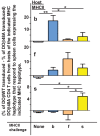
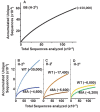
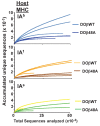


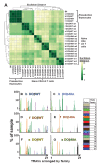
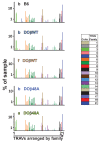










Similar articles
-
The presumptive CDR3 regions of both T cell receptor alpha and beta chains determine T cell specificity for myoglobin peptides.J Exp Med. 1990 Jul 1;172(1):27-33. doi: 10.1084/jem.172.1.27. J Exp Med. 1990. PMID: 1694219 Free PMC article.
-
MHC Bias by T Cell Receptors: Genetic Evidence for MHC and TCR Coevolution.Trends Immunol. 2017 Jan;38(1):2-4. doi: 10.1016/j.it.2016.11.003. Epub 2016 Dec 9. Trends Immunol. 2017. PMID: 27939452 Free PMC article.
-
Analysis of specificity for antigen, Mls, and allogenic MHC by transfer of T-cell receptor alpha- and beta-chain genes.Nature. 1988 Dec 8;336(6199):580-3. doi: 10.1038/336580a0. Nature. 1988. PMID: 2849059
-
Thymic Origins of T Cell Receptor Alloreactivity.Transplantation. 2017 Jul;101(7):1535-1541. doi: 10.1097/TP.0000000000001654. Transplantation. 2017. PMID: 28114168 Review.
-
The generation and selection of the T cell repertoire: insights from studies of the molecular basis of T cell recognition.Immunol Rev. 1988 Jan;101:81-113. doi: 10.1111/j.1600-065x.1988.tb00733.x. Immunol Rev. 1988. PMID: 2450828 Review.
Cited by
-
MHC-II alleles shape the CDR3 repertoires of conventional and regulatory naïve CD4+ T cells.Proc Natl Acad Sci U S A. 2020 Jun 16;117(24):13659-13669. doi: 10.1073/pnas.2003170117. Epub 2020 Jun 1. Proc Natl Acad Sci U S A. 2020. PMID: 32482872 Free PMC article.
-
ARID1A Deficiency Regulates Anti-Tumor Immune Response in Esophageal Adenocarcinoma.Cancers (Basel). 2023 Nov 12;15(22):5377. doi: 10.3390/cancers15225377. Cancers (Basel). 2023. PMID: 38001638 Free PMC article.
-
Convergence, plasticity, and tissue residence of regulatory T cell response via TCR repertoire prism.Elife. 2024 Apr 9;12:RP89382. doi: 10.7554/eLife.89382. Elife. 2024. PMID: 38591522 Free PMC article.
-
Single T Cell Sequencing Demonstrates the Functional Role of αβ TCR Pairing in Cell Lineage and Antigen Specificity.Front Immunol. 2019 Jul 31;10:1516. doi: 10.3389/fimmu.2019.01516. eCollection 2019. Front Immunol. 2019. PMID: 31417541 Free PMC article.
-
Single cell analysis of host response to helminth infection reveals the clonal breadth, heterogeneity, and tissue-specific programming of the responding CD4+ T cell repertoire.PLoS Pathog. 2021 Jun 9;17(6):e1009602. doi: 10.1371/journal.ppat.1009602. eCollection 2021 Jun. PLoS Pathog. 2021. PMID: 34106992 Free PMC article.
References
-
- Adams JJ, Narayanan S, Birnbaum ME, Sidhu SS, Blevins SJ, Gee MH, Sibener LV, Baker BM, Kranz DM, Garcia KC. Structural interplay between germline interactions and adaptive recognition determines the bandwidth of TCR-peptide-MHC cross-reactivity. Nature Immunology. 2016;17:87–94. doi: 10.1038/ni.3310. - DOI - PMC - PubMed
-
- Allison JP, McIntyre BW, Bloch D. Tumor-specific antigen of murine T-lymphoma defined with monoclonal antibody. Journal of Immunology. 1982;129:2293–2300. - PubMed
Publication types
MeSH terms
Substances
Grants and funding
LinkOut - more resources
Full Text Sources
Other Literature Sources
Molecular Biology Databases
Research Materials

